
Reading offers so many benefits to children, such as exposure to new words, building key language skills, learning new information about the world, and so much more. Simply put, reading — lots of it — is essential for children. Although reading is undoubtedly beneficial, it takes awesome books to get children to read: That’s why Spark Math has put together a Math Summer Reading List for children in Kindergarten to Primary 6 to help them continue learning outside of school.
We encourage you to explore these suggested titles for children of different levels. These handpicked books will get your children hooked on reading every day. Let’s get started!
For Kindergarten to Primary 3 (ages 4-9)
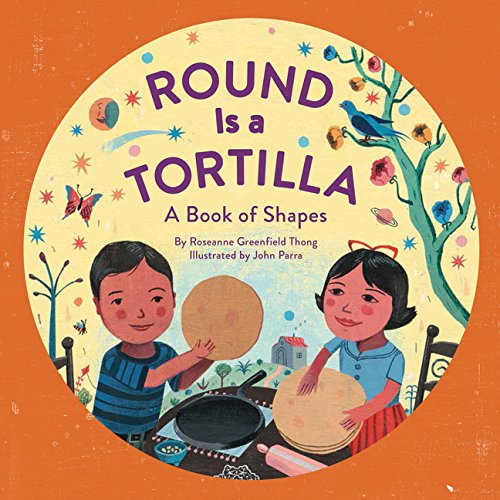
1. Round Is a Tortilla: A Book of Shapes
- Written by Roseanne Thong & Illustrated by John Parra
- Kindergarten to Primary 1
Math Concepts
- Shapes
A little girl discovers that shapes are all around her. She finds shapes in the food she eats, the games she plays, objects in her room, and places around her town. This lively picture book helps reinforce the concept of shapes easily found around us in daily life.
Spark Math’s Verdict
The lively picture book teaches more than just common shapes as it seamlessly weaves together many references to Latino culture and foreign languages, such as “Round are tortillas and tacos” and “A bowl of Abuela’s stew”. This book is a delightful read-aloud that also shares fun parts of other cultures.
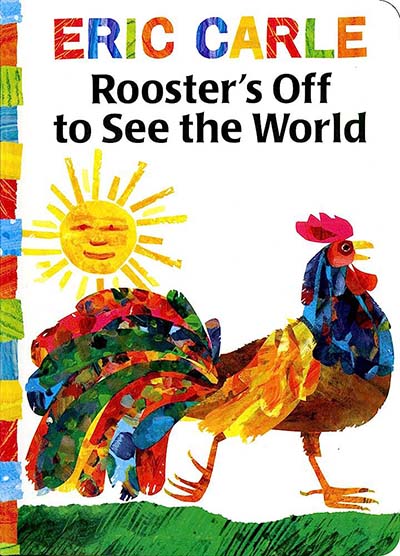
2. Rooster’s Off to See the World
- By Eric Carle
- Kindergarten to Primary 1
Math Concepts
- Counting from 1 to 5
One fine morning, a rooster sets off to see the world. Soon he’s joined by 2 cats, then 3 frogs, then 4 turtles, then 5 fish. Later, his new friends head home one group after another, first 5 fish, then 4 turtles, then 3 frogs, then 2 cats. The rooster is alone again and returns to his own home as well.
Spark Math’s Verdict
The story helps children count from 1 to 5, and then back down from 5 to 1. The beautiful and colourful collage of illustrations makes it a delightful read. A fun book activity idea is to ask children to draw their own illustrations — 1 rooster, 2 cats, 3 frogs, 4 turtles, and 5 fish — then act out the story.
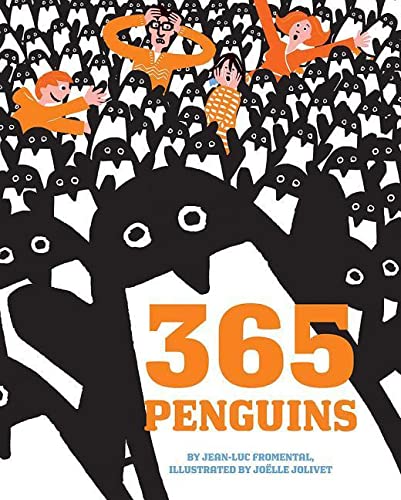
3. 365 Penguins
- Written by Jean-Luc Fromental & Illustrated by Joëlle Jolivet
- Kindergarten to Primary 3
Math Concepts
- Counting
- Addition
- Multiplication
It’s good to receive presents, right? Well, that depends on whether one likes penguins: Lots and lots of them, to be exact.
Starting at 9 a.m. on New Year’s Day with a knock on the door, the family receives a penguin as a present. The family is bemused and finds the penguin very cute. But each day thereafter, a new penguin arrives. The family soon encounters all sorts of problems: Firstly, how does one care for so many penguins? How does one feed, clean, and house so many penguins? Join this family as they learn about penguins, conservation, and elements of math.
Spark Math’s Verdict
The title is not an exaggeration! There really are 365 illustrated penguins (go ahead and count them)! The book, which is illustrated predominantly in orange, black, and white, teaches children about numbers in a fun and humorous way, and children can also practice adding large numbers and even multiplication too!
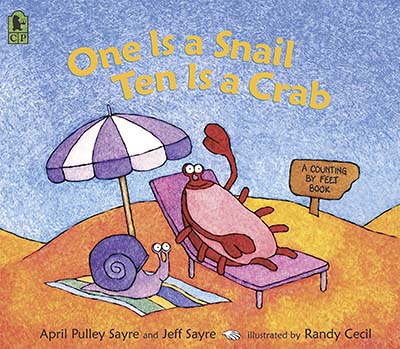
4. One Is a Snail, Ten Is a Crab: A Counting by Feet Book
- Written by April Pulley Sayre and Jeff Sayre & Illustrated by Randy Cecil
- Kindergarten to Primary 3
Math Concepts
- Addition
- Subtraction
- Counting
1 is a snail.
2 is a person.
3 is a person and a snail.
4 is a dog.
5 is a dog and a snail.
This playful book uses feet and footprints as a counting tool. The book counts all the way up to 100 — which is the total number of feet 10 crabs have!
Spark Math’s Verdict
Who doesn’t like counting… with feet! The book is a fun way to introduce numeracy and talk about math to your children. Challenge your children by asking them to make 100 feet by multiplication and other ways instead of counting.
For example: Find the total number of feet 8 crabs and 5 dogs have? (answer: 100 feet)
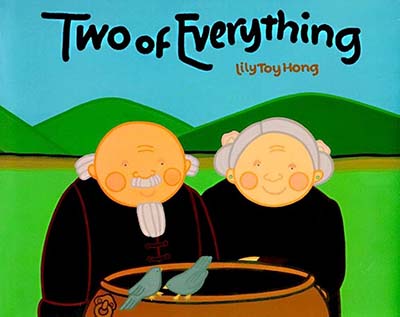
5. Two of Everything: A Chinese Folktale
- By Lily Toy Hong
- Primary 1 to Primary 3
Math Concepts
- Addition
- Counting
- Patterns
Meet Mr and Mrs Haktak: an old and poor couple who live in a small hut and have a tiny garden where they grow their food. One day, Mr Haktak digs up an ancient brass pot in his garden. He puts his coin purse (with his last 5 gold coins) in the pot and carries the pot home. When Mrs Haktak’s hairpin falls into the pot, she reaches in to discover that there are not only2identical hairpins, there are also 2 identical coin purses too-2 purses, each with 5 gold coins, make 10 gold coins in total! This is a magic pot!
Life is good for the Haktaks until one day, someone falls into the pot… Let’s just say more isn’t always better.
Spark Math’s Verdict
This fun folktale is an excellent math resource for practising addition, introducing doubling numbers, and more. Your children can practice counting, or, better still, skip counting as they recognise patterns within different groups of numbers.
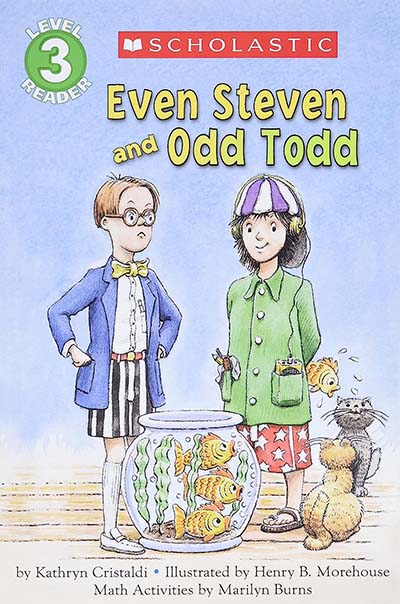
6. Even Steven and Odd Todd
- Written by Kathryn Cristaldi & Illustrated by Hank Morehouse
- Primary 1 to Primary 2
Math Concepts
- Even Numbers
- Odd Numbers
This is a book about two cousins, Steven and Todd, who are very different. Steven lives an even life and likes even numbers. He lives in a 2 story house with 4 bikes, 6 cats, 8 gerbils, 10 goldfish, and 12 sprinklers in his flower garden. Todd, on the other hand, has his odd ways and likes odd numbers. When Todd enters into Steven’s even life, things quickly get problematic.
Spark Math’s Verdict
This is a fun and interesting book for children to learn about odd and even numbers. You can use the book to help teach children skip counting from a young age as skip counting is a helpful scaffold for learning multiplication in Primary 1.
For Primary 4 to Primary 6 (ages 10-12)
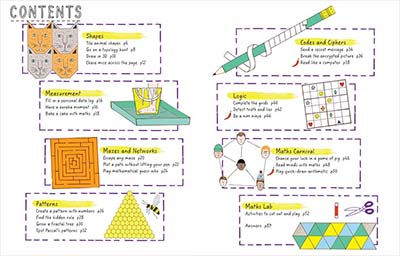
1. This Book Thinks You’re a Math Genius
- Written by Mike Goldsmith & Illustrated by Harriet Russell
- Primary 3 to Primary 4
Math Concepts
- Geometry
- Space and volume
- Statistics
- Numbers and number patterns
- Codes and cyphers
- Concept of infinity
Looking to bring math concepts to life in creative ways? The book centres around seven key mathematical concepts, and each mathematical concept is packaged with activities such as reading minds with math and paper-based craft which engage children in a fun way.
Spark Math’s Verdict
The book balances fun and instruction as it helps introduce key mathematical concepts in a highly visual way. The book, which has many fill-in and DIY pages, encourages young learners to experiment and investigate math concepts for themselves.
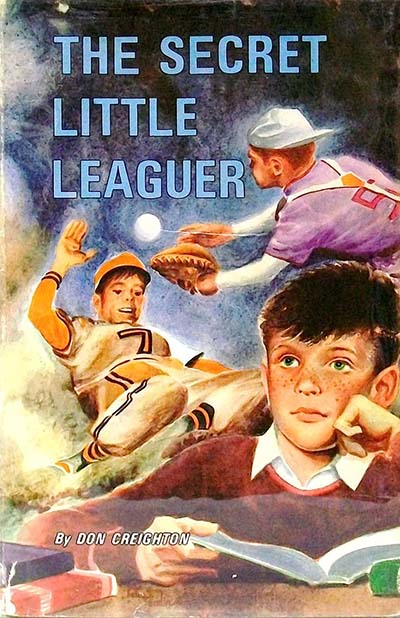
2. The Secret Little Leaguer
- By Don Creighton
- Primary 4 to Primary 6
Math Concepts
- Average
- Percentage
Charley Baker is eleven years old and is an oddball in his family. His parents are both professionals, and his siblings are extremely scholarly and intellectual. Charley, on the other hand, struggles in school. He is only good at three things: he loves to run, throw things, and climb trees.
One day, Charley’s friend, Butch, tries to get him to try out for the Little League (4 y.o. to 16 y.o.) baseball team. Charley, who has never even put on a baseball glove or held a bat, discovers how his love for running and throwing things actually makes him quite a good baseball player. Although Charely makes the team, he believes his family thinks sports are not for people like them and must hide his secret Little Leaguer identity.
Spark Math’s Verdict
One doesn’t have to be into baseball to enjoy the story. Join Charley on his journey to become a secret Little Leaguer as he works hard to balance school and baseball practice. The book is also filled with fun baseball math, such as batting average and on-base percentage. Check out our Math in Sports: Baseball and Mathematics blog post to learn more!
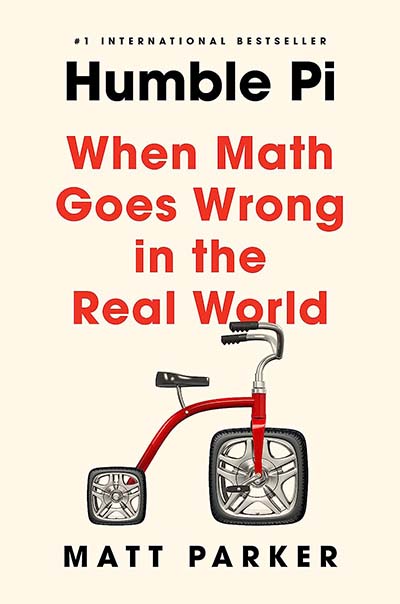
3. Humble Pi: A Comedy of Math Errors
- By Matt Parker
- Primary 6 and above
Math Concepts
- Applied mathematics (or really, how our world is built on math)
π (Pi), a mathematical constant that is the ratio of a circle’s circumference to its diameter, which is approximately equal to 3.14159, is not as humble as we make it out to be because misplaced decimals in the real world can have results that range from hilarious to disastrous. From big data to elections to space exploration failures and more, this book explores mathematical mishaps in the world which are caused by the most innocuous mistakes in math.
Spark Math’s Verdict
This book is the answer to any child who asks, “When am I ever going to use math in the real world?” And here it is, some of humanity’s all-time greatest miscalculations and their consequences. Getting the math correct, or wrong, rather, has never been so interesting.
Looking for more engaging ways to help your child improve at math? Spark Math is an education programme perfect for helping children use the skill they learnt all year in fun and engaging ways. Available for students from K2 to P5, Spark Math’s online programme features online classes, gamified lessons, and a real experienced teacher. Try it for yourself by signing up to try a free demo class today!
For more great news and activities the whole family can enjoy, check out our Spark Math blog. Visit our Pinterest Page for more fun activities!




